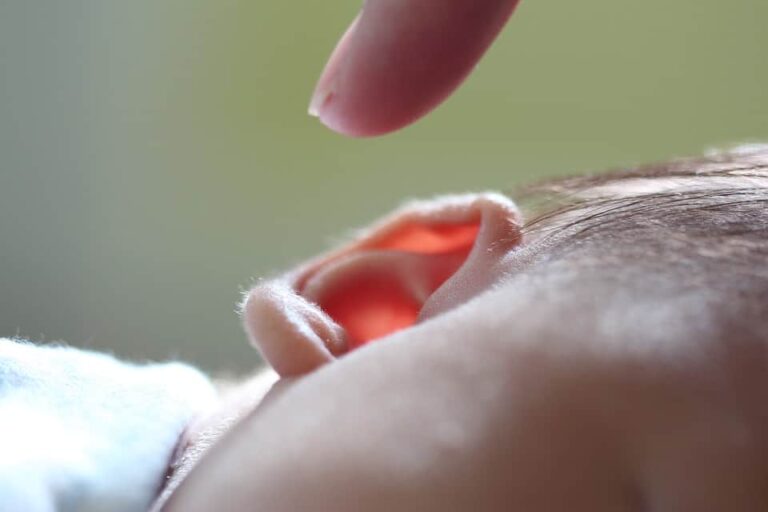Our senses are our body’s detection system. We all have senses and we all use them every day to take in and interpret everything that goes on around us. When that detection system isn’t working properly, we become very confused regarding what is happening in our environment and how we should respond to it.
This is how people with Sensory Processing Disorder feel all the time. Sensory processing disorder creates considerable discomfort, mental anguish, and delayed development in many children and adults.
This guide will explain what sensory processing disorder is, how it affects daily life, and how you can find out if your child has sensory processing disorder.
Table of Contents
- What is Sensory Processing Disorder?
- Is Sensory Processing Disorder a Real Condition?
- What Causes Sensory Processing Disorder?
- Are Autism and Sensory Processing Disorder the Same?
- Conditions Associated with Sensory Processing Disorder
- Prevalence of Sensory Processing Disorder
- Who Diagnoses Sensory Processing Disorder?
- How is Sensory Processing Disorder Treated?
- Will Medication Help Sensory Processing Disorder?
- How Will My Child Function in School?
- What Can I Do to Help My Child?
- Resources for Parents
What is Sensory Processing Disorder?
Sensory processing disorder, known as SPD, is a condition in which the brain misinterprets information that is gathered by the senses of the body. To understand how this can happen, it is first necessary to understand sensory processing.
The body has 8 (no, not 5 – 8) senses that are used to gather information from the environment and send signals to the brain about that information. The brain interprets that information and responds on both a conscious and unconscious level.
The 8 senses that gather information are:
- Vision
- Hearing
- Touch
- Taste
- Smell
- Proprioception – the nerve endings in the muscles and joints of the body send signals to the brain regarding their position in relation to each other and the rest of the body.
- Vestibular – the semi-circular canals of the inner ear send information to the brain about the body’s position in space in relation to the earth. The vestibular sense affects balance and ability to tolerate movement.
- Interoception – this sense is the body’s ability to detect how the internal organs are feeling and to communicate this information with the brain. Hunger, thirst, pain, and temperature are examples of interoceptive sensations.
As these senses transmit information to the brain, the brain processes the information and interprets it so that it can perceive the environment correctly.
This is how we know that the sky is blue, the temperature is warm, your body is out of bed and breakfast smells good! People who process sensory input normally are able to adjust their actions and behavior in response to what their bodies sense in the environment. This is called sensory modulation.
When sensory processing disorder is present, the brain experiences difficulty processing one or more of these senses. Information about the environment might be gathered in a normal manner, but the signal from the sensory receptor to the brain gets distorted somewhere along the way.
When this happens, the brain receives incorrect information from that sense and responds inappropriately. The resulting actions of the body are not in line with the actual sensory information, resulting in impaired sensory modulation.
If more than one sense is distorted or if the distortion is severe, the behavior that results from the misinterpretation of the environment can be extreme.
Is Sensory Processing Disorder a Real Condition?
There has been much debate over whether or not SPD can be considered a stand-alone condition.
Originally called sensory integration dysfunction, sensory processing disorder was first described by A. Jean Ayres, an occupational therapist and educational psychologist.
Much of the research surrounding SPD has been limited to case studies or small groups of subjects and focused on the effectiveness of treatment, rather than the causes and corresponding changes in the brain.
Because of this, many health professionals feel that the documentation and research surrounding SPD does not meet the criteria for identification as a disorder all on its own.
In fact, SPD was not included in the Diagnostic and Statistical Manual of the American Psychiatric Association (DSM-5).
The debate continues, however, and recent ongoing research has focused on studying brain structure in children who are identified as having SPD. In fact, a couple of recent studies were the first to pinpoint changes in the brain that directly correspond to SPD.
The first study used diffuse tensor imaging (DTI) to examine the brains of 16 boys age 8 to 11 who were identified as having SPD, and 24 boys of the same age who were identified as neurotypical.
The study showed specific patterns of reduced structural integrity in the white matter of the brain, particularly that in the back of the brain, in the boys with SPD (Owen, et.al., 2013).
The second study used the same type of imaging to study the integrity of white matter in the brains of 15 boys diagnosed with autism, 16 boys identified as having SPD, and 23 boys identified as neurotypical.
This study showed that both the group with autism and the group with SPD showed structural integrity problems in the white matter of the brain associated with sensory perception and sensory integration, but only the boys diagnosed with autism showed structural integrity problems in the white matter of the brain associated with social-emotional processing (Chang, et.al., 2014).
Both of these studies document that SPD is associated with neurological changes in the brain and that those changes differ from the changes present in autism, which lends evidence to SPD being a separate condition.
In fact, the National Institute of Mental Health has recently proposed adding sensory processing and the senses of proprioception and interoception to their Research Domain Criteria (Harrison, et. al., 219).
Future research should help to substantiate this initial evidence, clarifying the mechanisms involved in SPD.
Signs and Symptoms of Sensory Processing Disorder
SPD has many different signs and symptoms, so we will not list them all here. A person who has SPD may have only a few symptoms, or may have many. These symptoms usually follow one of three patterns that indicate the way in which sensory modulation is affected.
The three patterns are:
1. Over-responsiveness to sensory input. People who are over-responsive to sensory input are overly sensitive to the sensations that surround them. This causes them to interpret those sensations as unpleasant or even noxious.Here are a few examples of over-responsiveness to sensory stimuli:
- covering ears or running away from loud noises
- irritated by clothing tags
- complaining that fluorescent lights are flickering
- refusing to eat certain foods
- gagging in response to certain smells
- fear of swinging or sliding on the playground
2. Under-responsiveness to sensory input. Individuals who display under-responsiveness to sensory input either do not notice sensations or require extra amounts of sensory input before their nervous systems register the sensation.Some examples of under-responsiveness are:
- repeatedly asking for the teacher to repeat the instructions to an assignment
- being unaware of injuries or bleeding
- continuing to play in spite of being cold or wet
- working for hours without eating or eating too much without feeling full
- difficulty awaking from sleep
3. Sensory seeking. Sensory seekers crave certain types of sensory stimulation. These people will seek out sensory input in increasing amounts, resulting in sensory overload if behavior is not checked.Here are some examples of sensory seeking:
- jumping repeatedly on or off of furniture
- crashing into objects or other people
- spinning in circles for prolonged periods of time
- making repeated noises with fingers or mouth
- repeatedly flushing the toilet or turning the lights on and off
SPD may present itself differently depending on the age of the person. Here are examples of over-responsiveness, under-responsiveness and seeking at different ages:
| Over-Responsive | Under-Responsive | Sensory Seeking | |
| Infants | -resistant to being held
-cries at loud noises -spits out food or liquid |
-sleeps for long periods
-does not demand to eat |
-grabs at objects or textures |
| Toddlers | -refuses toys that are fuzzy or textured
-spits out certain foods -pushes away from hugs |
-ignores music or television
-does not explore environment |
-grabs at everything within reach
-explores environment without showing fear or caution |
| Pre-Schoolers | -cries when bathing or having hair washed
-eats only certain foods -plays alone; will not sit next to other children |
-clumsy, falls a lot
-unaware of food on face or dirt on hands |
-climbs on tall objects
-runs around and around the house -jumps on parents |
| School Age | -afraid of the fire alarm
-covers ears in the lunch room -refuses to wear shoes; wears sandals instead |
-encroaches on the personal space of peers
-leans on furniture or adults -trouble keeping up with group lessons |
-unable to sit still; wiggles in seat, climbs on desk
-repeatedly asks to get a drink or go to the bathroom |
| Adolescents | -avoids large groups of peers
-engages in solitary activities like reading, bicycling or swimming -trouble making friends |
-poor posture, slouches a lot
-misses assignments or important information in class -slow reaction time during sports |
-thrill seeking
-may experiment with alcohol or drugs -may be reckless when riding a bike, skateboarding, or driving |
| Adults | -wants workplace a certain way, may alienate co-workers due to personal demands
-may isolate self; avoids outdoors or social events |
-may arrive late for work or appointments
-misses important instructions or conversations -may require repeated reminders for family or social events |
-may engage in “extreme” sports
-always busy, can’t sit down and relax -may frequently move or switch jobs |
The symptoms of SPD can cause problems for people across the life span if not addressed.
Children with sensory processing disorders experience delayed developmental milestones, including poor gross and fine motor skills and impaired social interaction with peers. These problems continue as children grow, affecting their performance in school, at home, and during play with peers.
Adolescents and adults experience problems keeping up with the demands of school or work, as well as limited social opportunities, resulting in isolation and depression.
What Causes Sensory Processing Disorder?
The exact cause of SPD is unknown, but as stated above, recent research is beginning to show that changes in the integrity of the white matter of the brain are associated with sensory processing problems.
Certain risk factors have also been associated with SPD, including:
- premature birth
- low birth weight
- prenatal complications
- complications during delivery
- maternal stress, illness, or use of medications
- assisted delivery, such as use of forceps
- ethnic minority
- living with a single parent
- low socioeconomic status
- history of adoption
Are Autism and Sensory Processing Disorder the Same?
One of the reasons sensory processing disorder is not often diagnosed by itself is that it occurs as a part of several different conditions. The condition most often associated with sensory processing disorder is autism.
While people with autism experience many problems with sensory processing, autism and sensory processing disorder are not the same condition. In fact, many people with autism have symptoms of sensory processing disorders, but people with sensory processing disorder do not usually have symptoms of autism.
The research showing the differenced in the effects of SPD and autism on the white matter of the brain supports this point.
Additional research shows that young children with autism under-react to stimuli that is both from social sources (i.e. people) and nonsocial sources than both children with developmental delays and typically developing children (Baranek, et. al. 2013).
Schoen, et. al. (2013) found that children with autism had less responsiveness overall to sensory stimulation but more sensory sensitivity to taste and smell than typically developing children, while children with SPD showed more atypical sensory seeking behaviors. Both of these studies highlight the differences between autism and SPD.
Conditions Associated with Sensory Processing Disorder
While most commonly associated with autism, sensory processing disorder is also associated with the following conditions:
- attention deficit and hyperactivity disorder (ADHD)
- fragile x syndrome
- cerebral palsy
- Prader Willi syndrome
- bipolar disorder
- anxiety disorders
- depression
- other cognitive and mental health conditions
Prevalence of Sensory Processing Disorder
Since SPD is not always diagnosed as a stand-alone condition, it is difficult to pinpoint what the true prevalence of SPD is. Recent estimates range from 10% to 55% in children without other diagnosed disabilities, and from 40% to 88% in children with disabilities (Critz, et. al. 2015).
The STAR Institute for Sensory Processing Disorder cites research that estimates a prevalence rate of 5% to 16% for all children up to the age of 11 (STAR Institute, 2018).
Who Diagnoses Sensory Processing Disorder?
The first step in diagnosing SPD is to rule out other factors or conditions that could be causing symptoms.
If your child is displaying symptoms of sensory problems, make an appointment with his primary care provider to rule out any medical causes. Your primary care physician may refer your child to a neuropsychologist for testing to determine if your child has a neurological disorder such as autism, ADHD, or something else.
Once other conditions are ruled out, your primary care provider may refer your child to an occupational therapist. The occupational therapist will conduct an evaluation, consisting of a series of observations, questionnaires, and activities, to help determine if your child has SPD.
The occupational therapist will report these findings to your child’s physician and will recommend a course of treatment to address your child’s sensory processing problems.
If your child is in school and his sensory processing issues are interfering with his ability to participate in his education, the school district may initiate an evaluation to determine if your child needs special education services.
Occupational therapy may be a part of this evaluation and the school occupational therapist may also test for sensory processing disorder. You can request that your child receive an occupational therapy evaluation as a part of this process and that the evaluation include testing for sensory problems.
How is Sensory Processing Disorder Treated?
Treatment for SPD is usually provided by an occupational therapist (OT) or an occupational therapy assistant (OTA). After a person has been identified as having SPD, the OT will work with the person and any caregivers to provide sensory interventions.
These treatments are designed to do one of two things:
1. Change the neural pathways to integrate the senses. Direct occupational therapy intervention uses sensory activities designed to help suppress overactive sensory pathways and enhance underactive sensory pathways.
Treatment is designed to help sensory pathways stabilize and integrate with the brain, resulting in more normal perception of the environment. This type of treatment is called sensory integration.
Here are some examples of the types of activities used to treat different sensory processing problems. These activities can be used with all ages, but are most often used with children:
-
- Problems with vestibular processing
- Swinging on different types of swings
- Riding on a scooter board
- Rolling on a mat or ramp
- Controlled spinning
- Problems with proprioceptive processing
- Jumping on a trampoline
- Playing catch with a weighted ball
- Playing in a ball pit or crash pit
- Balancing on a therapy ball
- Problems with touch (tactile) processing
- Brushing the skin according to a specific protocol (Wilbarger brushing protocol)
- Placing hands in different textures such as sand, dry rice, or dried beans
- Crawling through a stretchy tunnel
- Problems with vestibular processing
2. Adapt the environment to compensate for sensory processing problems. People who have sensory processing disorder need to learn how to compensate for their sensory differences.
While occupational therapy treatment can help lessen the severity of sensory symptoms, people with sensory processing disorder usually have to live with their symptoms at some level for the rest of their lives.
Working with an occupational therapist to learn how to adapt to the environment helps people with sensory processing disorders to cope with sensory challenges during everyday activities.
Some examples of adaptations for sensory processing disorder are:
- Cover fluorescent lights with shades or switch bulbs to soft light.
- Use noise blocking headphones in crowded, noisy environments.
- Wear compression garments to desensitize the skin.
- Use schedules and timers to prepare for changes in environment that occur with transitions.
- Work at a tall desk that allows the person to stand and move around.
People with SPD often work with an occupational therapist to create a sensory diet. This is a menu of specific activities and adaptations that will address that person’s sensory needs.
The sensory diet is used at home, school and work and is designed to provide a way to follow through with the sensory treatment techniques and adaptations provided during occupational therapy treatment.
Sensory diets are customized to each individual person and specific as to how each activity should be completed and how each adaptation should be used, as well as how long and how often for each.
Will Medication Help Sensory Processing Disorder?
One of the reasons some health care professionals do not view SPD as a stand-alone condition is that, until recently, a physiological basis for the disorder was not identified. Medication to affect any physical reasons for SPD was, therefore, not possible.
To date, medication has not been used to directly treat SPD. However, medications might be used to treat some of the symptoms of conditions that often occur along with SPD.
For example, a child with ADHD and SPD may receive medication for the ADHD that might affect the child’s perception of his environment.
A child with an anxiety disorder and SPD might take medication for the anxiety disorder that might help the child feel calmer and reduce oversensitivity to sensory input.
While these medications might help take the edge off of SPD, they are treating the other condition and not directly treating the SPD.
How Will My Child Function in School?
If your child has SPD, you will likely be aware that he or she will have some challenges attending school.
Public schools are large, noisy, visually busy places full of different sounds and smells. Normal children must use all of their senses during a school day and must be able to switch and adjust those senses based on what they are doing.
Children with SPD have great difficulty tolerating and adjusting to all of the sensory input that they are bombarded with in school.
Fortunately, most schools have occupational therapists on staff or at least available to help children with SPD. The OT at your child’s school can identify what types of sensory processing problems your child is experiencing and can help your child to cope with these problems by working with your child to develop and integrate the sensory pathways and providing your child with a sensory diet to address sensory issues throughout the school day.
The OT will also work with school staff to adapt the environment for your child so that your child can function in spite of sensory processing problems.
What Can I Do to Help My Child?
As stated earlier in this article, if you suspect that your child has SPD, talk to your child’s primary care provider and make an appointment for a check-up to rule out any possible medical causes for your child’s symptoms. While there, talk to your provider about a referral to an occupational therapist for an evaluation of sensory processing problems.
If your child attends a public school, your child will already have access to occupational therapy services.
Talk to your child’s teacher about your child’s performance in school. Your child’s teacher will help you to determine if a referral for a special education evaluation, including an occupational therapy evaluation, is needed.
Once your child begins to receive occupational therapy services for SPD, follow any recommendations and home programs that the therapist gives you.
These recommendations will carry the treatment that your child receives over to home and will help your child to adjust to the sensory challenges that he or she has at home or in the community.
Each child’s treatment program is customized for that child, so don’t try things that another child’s parent has recommended or things that you have read about on the internet. These strategies might be effective, but not necessarily for your child.
It is important to find out what specific sensory problems are affecting your child and which interventions are the best for those problems. The best way to do this is to work with your child’s occupational therapist.
Resources for Parents
The following resources may help you to find out more information about SPD and how you can help your child deal with this condition:
STAR Institute for Sensory Processing Disorder – this website provides a vast amount of information, resources, and research related to sensory processing disorder.
Carol Stock Kranowitz– Website for the renowned author of The Out-of-Sync Child and other publications on sensory processing disorder, this website provides access to all of Carol’s books, articles and interviews, as well as other resources related to sensory processing disorder.
Sensory World – this website offers for sale the largest collection of books, CDS and DVDs about sensory processing disorder. Many free resources are also available here.
The Spiral Foundation – this non-profit organization provides resources related to research and education on sensory processing disorder.
Children with SPD can develop and grow normally with appropriate sensory intervention. If you suspect that your child has SPD, don’t delay. Contact your child’s physician and start the evaluation process as soon as possible.
References
1. Owen, J. P., Marco, E. J., Hill, S. S., Arnett, A. B., Desai, S., Fourie, E., … Mukherjee, P. (2013, June 23). Abnormal white matter microstructure in children with sensory processing disorders. NeuroImage Clinical 2:844-853. Retrieved October 8, 2019
2. Chang, Y.-S., Owen, J. P., Desai, S. S., Hill, S. S., Arnett, A. B., Harris, J., … Mukherjee, P. (2014, July 30). Autism and Sensory Processing Disorders: Shared White Matter Disruption in Sensory Pathways but Divergent Connectivity in Social-Emotional Pathways. PLoS One 9(7): e103038. Retrieved October 8, 2019.
3. Harrison, L. A., Kats, A., Williams, M. E., & Aziz-Zadeh, L. (2019, February 5). The Importance of Sensory Processing in Mental Health: A Proposed Addition to the Research Domain Criteria (RDoC) and Suggestions for RDoC 2.0. Frontiers in Psychology 10:103. Retrieved October 8, 2019.
4. Baranek, G. T., Watson, L. R., Boyd, B. A., Poe, M. D., David, F. J., & McGuire, L. (2013, May). Hyporesponsiveness to social and nonsocial sensory stimuli in children with autism, children with developmental delays, and typically developing children. Developmental Psychopathology 25(2):307-320. Retrieved October 8, 2019.
5. Schoen, S. A., Miller, L. J., Brett-Green, B. A., & Nielsen, D. M. (2009, November 3). Physiological and behavioral differences in sensory processing: a comparison of children with autism spectrum disorder and sensory modulation disorder. Frontiers in Integrative Neuroscience. Retrieved October 8, 2019.
6. Critz, C., Blake, K., & Nogueira, E. (2015, June 4). Sensory processing challenges in children. The Journal for Nurse Practitioners 11(7):710-716. Retrieved October 8, 2019
7. Latest Research Findings. (2018). Retrieved October 8, 2019.










